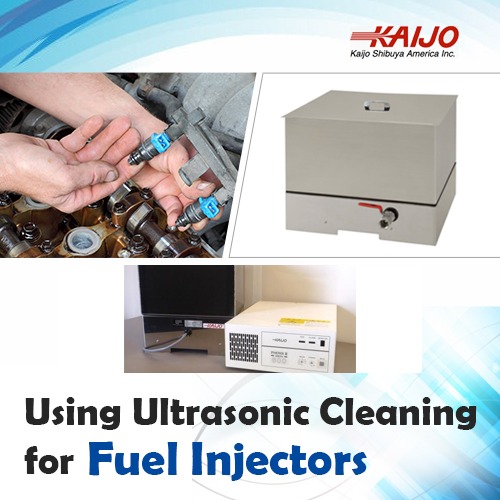Using Ultrasonic Cleaning for Fuel Injectors
November 20, 2017
408  Fuel injectors may suffer from deposits to such an extent that they have to be removed from the engine and cleaned manually. Traditional methods involve soaking in harsh solvents, forcing solvents through the injector at high pressure and removing deposits manually. These methods often don’t result in complete removal of the deposits and they may damage the injector. In addition, the solvents used are expensive and difficult to dispose of properly and in an environmentally friendly manner. The cleaning process itself is time-consuming and expensive. Ultrasonic cleaning systems offer an effective alternative that doesn’t suffer from the same drawbacks and that cleans quickly and completely.
Fuel injectors may suffer from deposits to such an extent that they have to be removed from the engine and cleaned manually. Traditional methods involve soaking in harsh solvents, forcing solvents through the injector at high pressure and removing deposits manually. These methods often don’t result in complete removal of the deposits and they may damage the injector. In addition, the solvents used are expensive and difficult to dispose of properly and in an environmentally friendly manner. The cleaning process itself is time-consuming and expensive. Ultrasonic cleaning systems offer an effective alternative that doesn’t suffer from the same drawbacks and that cleans quickly and completely.
How Ultrasonic Cleaning Works
With ultrasonic cleaning, fuel injectors are placed in a cleaning tank that has an ultrasonic transducer installed at the bottom or in the walls. Alternatively, a portable ultrasonic transducer may be placed in the cleaning solution. The injectors should be placed in a basket so that they don’t touch the tank walls or bottom to avoid damage from possible vibrations.
The ultrasonic transducer is powered from an ultrasonic generator that supplies the high frequency electrical signal. The normal signal for this type of ultrasonic cleaning is about 30 kHz, for example 26 kHz or 38 kHz. The transducer generates ultrasonic waves in the cleaning solution and the waves cause cavitation bubbles to form as the sound pressure rises and falls. It is these bubbles that clean hard metal surfaces such as those of fuel injectors.
Because the bubbles appear wherever the cleaning solution is present, ultrasonic cleaning works both outside and inside the fuel injectors, cleaning hard-to-reach places effectively and removing surface contamination everywhere. As a result, deposits and surface contamination are removed from inside fuel injector holes, from inside threads and from couplings. All foreign material is dislodged and cleaned down to the bare metal. At the same time, ultrasonic cleaning is fast, typically taking from ten to twenty minutes.
Ultrasonic Cleaning Hints
Ultrasonic cleaning systems are safe and easy to use and they clean without the use of aggressive chemicals. They work well with all kinds of parts to be cleaned but performance is improved when a few simple factors are taken into account. While they normally remove all dirt, they can work even faster for some cleaning applications.
Cleaning performance depends to some extent on the frequency used and the cleaning power of the generator. Lower frequencies deliver more powerful cleaning action but may damage fragile parts and some metal surfaces. In any case, the generator has to be powerful enough to fill the cleaning tank with ultrasonic waves. Too little power results in dead areas where the cleaning bubbles are fewer.
Another way of speeding up the cleaning process is to add a mild solvent to the cleaning solution. Although ultrasonic cleaning works well with plain water, dissolving or softening the deposit will help the bubbles clean. If the nature of the contaminant is known, specific solvents or detergents that attack the material to be removed can be added to the cleaning solution. Unlike cleaning with traditional methods, no soaking is required, and the mild solvent or detergent works together with the cavitation bubbles to speed up the cleaning action.
Kaijo’a Ultrasonic Cleaning Systems
Kaijo’s 60 years of experience with ultrasonic cleaners allow the company to propose the best solutions for their customers’ cleaning requirements. Kaijo can advise companies that have to clean automotive parts such as fuel injectors regarding the best ultrasonic frequencies to use and the power needed for the ultrasonic generator. The company can follow up with proposals from its complete line of ultrasonic cleaning equipment and can make suggestions based in its experience in supplying such equipment to various companies working with new and restored automotive parts.





